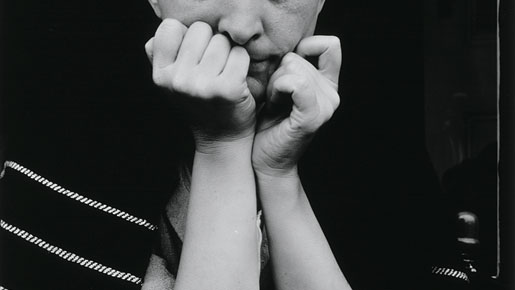
Georgia O’Keeffe has been an icon of American art for at least the last 50 years, since well before her death in 1986. Yet in Europe the master modernist is barely known. Long overdue, an important travelling retrospective, Georgia O’Keeffe: Life and Work, is set to change all that.
The show sets out to provide an introduction to O’Keeffe, says Barbara Buhler Lynes, the exhibition’s curator and director of the Georgia O’Keeffe Museum in New Mexico, USA. Anyone already familiar with O’Keeffe most likely knows the very large-scale flower paintings that she began producing in the 1920s while living in New York with her lover, artistic champion, and eventual husband, the famous photographer Alfred Stieglitz. There are examples of these works in the show – notably Purple Petunia (1925) and Two Jimson Weeds with Green Leaves and Blue Sky (1938) – but Lynes was very keen that this style of O’Keeffe’s painting should not dominate.
“What I felt was that the exhibition should be representative of all of her work… I wanted people to see the varied ambition in her subject matter; that she does flowers, fruits, New York buildings, various components of the natural world.”
Born in 1887 in the rural Mid-West, O’Keeffe was taught art as a child, before pursing more rigorous training at various institutions in Chicago and New York. It wasn’t until after 1918, however, when she moved to New York at Alfred Stieglitz’s invitation, that her career really began.
Stieglitz was a major player in the city’s avant-garde art scene and exhibited both O’Keeffe’s work and his own photographs of her right up until his death in 1946. There are a number of works by Stieglitz in Georgia O’Keeffe: Life and Work, included not only to bring the artist to life alongside her paintings, drawings and rare sculptures, but also to underline how “absolutely critical” was Stieglitz’s impact on O’Keeffe’s career. “He was a key figure in making her well known and without Stieglitz I often wonder if we would even know O’Keeffe”, explains Lynes.
Art of the sexes
Stieglitz’s support was invaluable, but his critical approach – which still feeds critical thinking about O’Keeffe’s work to this day – was in direct opposition to how the artist herself regarded her work. “On the one hand”, says Lynes, “he believed that a woman could be a great artist, which was a new idea in the twenties … a very positive and revolutionary idea. At the same time, he was also an essentialist – he believed that men and women created through their sexuality – and so he was not only gender-biased, but he was using Freudian ideas to explain O’Keeffe’s imagery”.
It was O’Keeffe’s resistance to this idea that led her to move away from abstraction towards representational form in the 1920s in an attempt to have people view her work for what it was rather than for what it said about her. As well as the flower paintings, other types of still life and landscape became highly significant in her oeuvre, particularly after she began working on and off in New Mexico from 1929. But abstraction was never excluded. “Her work, no matter how representational, always has an abstract underpinning. And at the very end of her career, which the exhibition makes very clear, she returns to abstraction entirely”, says Lynes.
O’Keeffe was inspired by the harsh, wide-open panoramas of the desert with its palette of bright, earthy colours. She was prolific in her creation of landscapes that exactly summon the atmosphere of her surroundings, Black Mesa Landscape, New Mexico / Out Back of Marie’s II (1930) a striking example of this style of work. After Stieglitz’s death, O’Keeffe moved to New Mexico permanently in 1949, continuing to work at the two homes she owned there until macular degeneration lead to the loss of her sight in 1984.
Lynes’s ultimate ambition for the show is that visitors take away with them a “curiosity about Georgia O’Keeffe” and are left “wanting to know more, wanting to be more aware of her work, of Stieglitz, of the American modernists and the importance of her contribution to the history of American art. And I want them to be aware that women can do anything when they set their minds to it”. Aims of which the great American painter would surely approve.
Georgia O’Keeffe: Life and Work is running at the Kunsthalle der Hypo-Kulturstiftung, Munich, Germany, from 3 February to 13 May 2012.
www.hypo-kunsthalle.de

